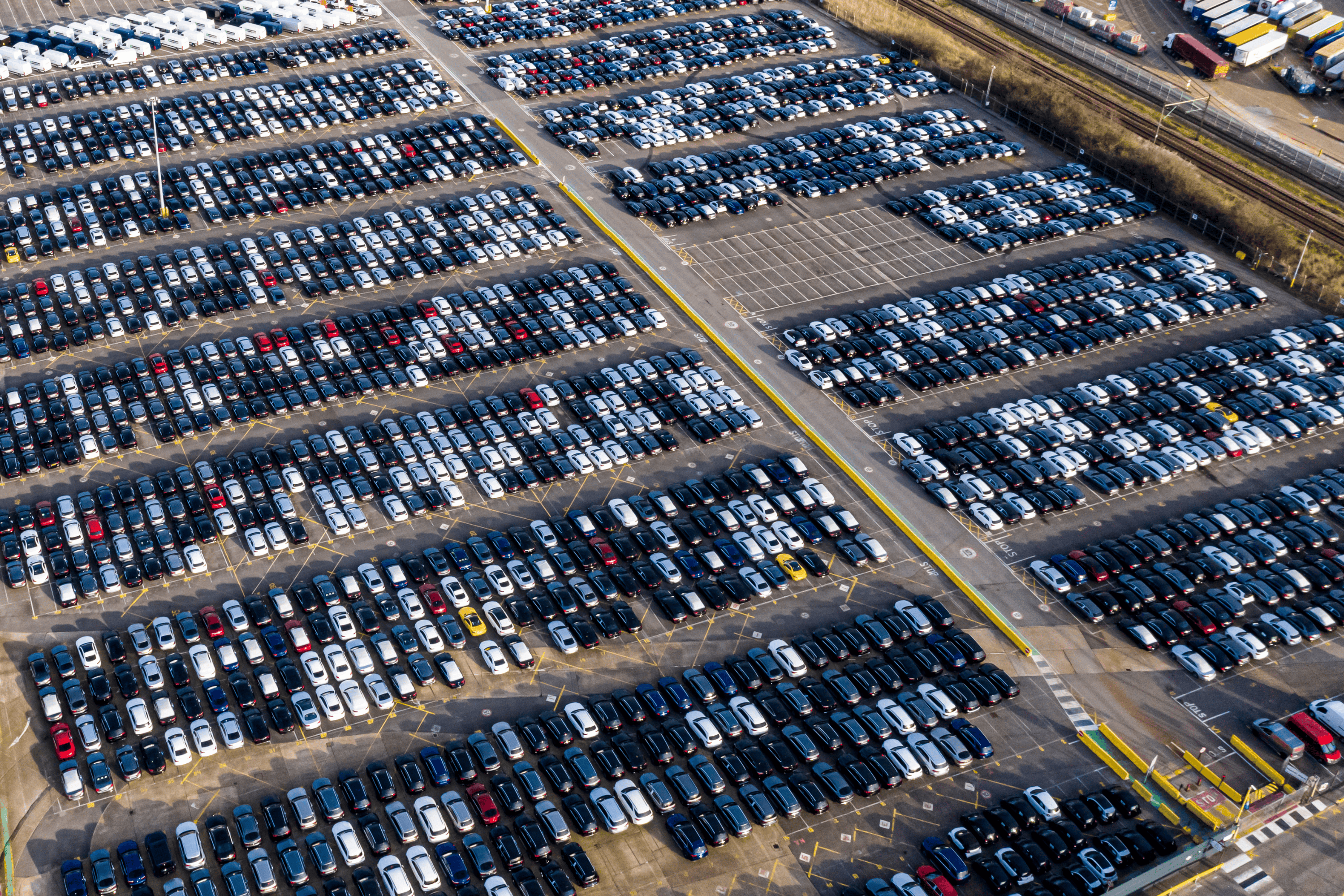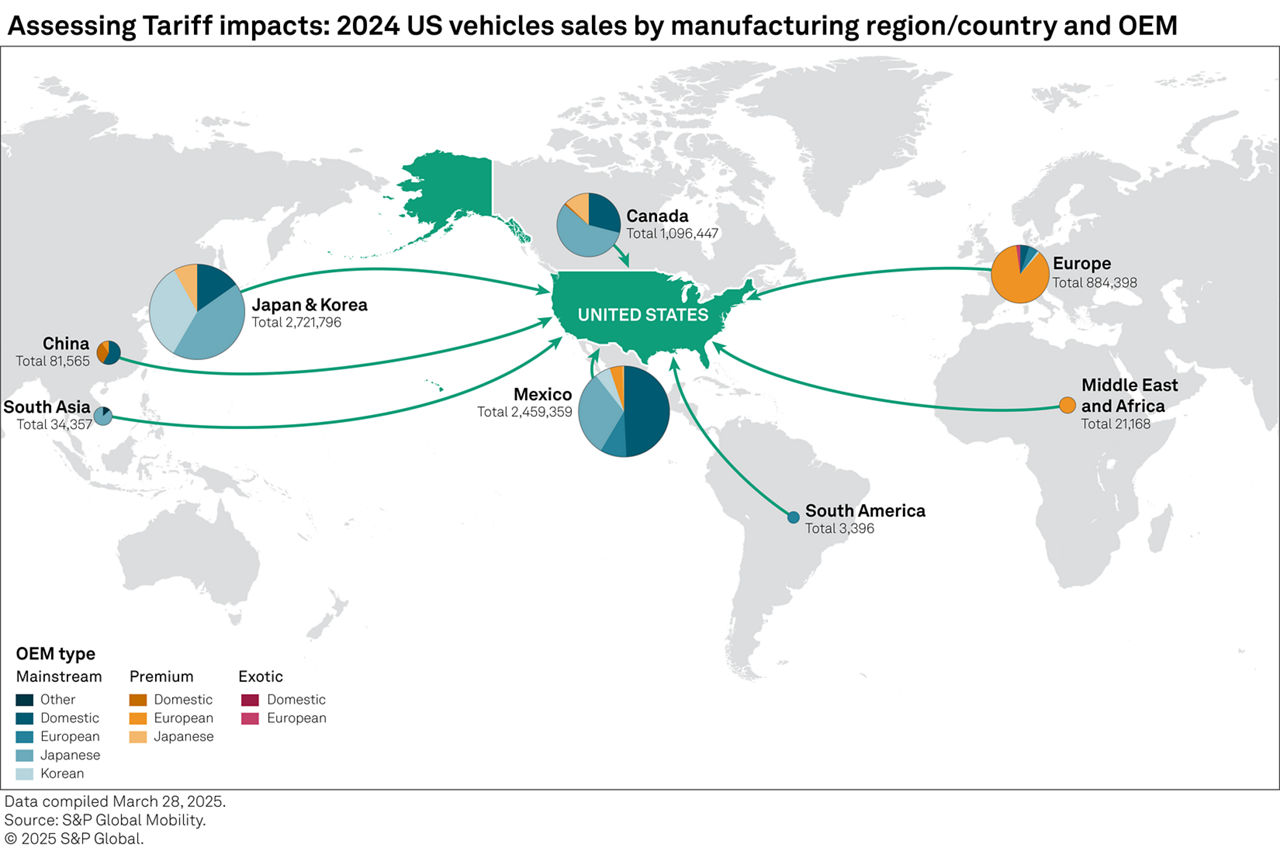
Discover how new import tariffs on cars affect prices. Find out how to protect your current vehicle. Discover tips for long-term car ownership!
Discover how new import tariffs on cars affect prices. Find out how to protect your current vehicle. Discover tips for long-term car ownership!

Get Instant Quotes and Buy Coverage Online From Leading Providers
The Trump administration's sweeping tariffs on imported vehicles are changing the auto industry landscape. 25% tariffs imposed in April 2025 are causing a domino effect, affecting the global supply chain.
According to Reuters, foreign manufacturers assemble at least half of the new vehicles sold in the U.S. The tariffs on imported passenger vehicles, light trucks, and components will raise prices across the board.
According to an article written by USA today explains it well. “A 25% tariff on imported passenger vehicles, light trucks and some auto parts goes into effect. Automakers that import more vehicles and auto parts will be affected the most. Toyota, Hyundai and Nissan could all be significantly impacted. The tariff is expected to affect consumers across the board, including new and used cars, maintenance costs, and insurance premiums.”
General Motors imports 46% of its vehicles. Stellantis, which owns Chrysler, Dodge, Jeep, and Ram, imports 45% of its vehicles. 21% of Blue Ova vehicles cross America’s borders before landing on American soil.
Toyota, Subaru, and Mazda tally more imports than German brands. BMW, Mercedes-Benz, VW, and Audi are German manufacturers affected. All are feeling the effects of the recently imposed tariffs.
The White House is about to launch a further round of tariffs on vehicle parts manufactured outside the US. Most assembly plants in the US have some imported parts. Tariffs are disrupting supply chains, causing a ripple effect on auto manufacturers.
An excellent example is the popular Ford F-15. This pickup truck is favored by Americans from all walks of life.
It was first introduced in 1948, and is a favored workhorse of farmers and other industries across America. Only 45% of the Ford F-15 parts are made in the US. This is according to a report from the National Highway Safety Administration.
The tariffs imposed by the White House will affect all countries importing vehicles and components into the US. The sweeping tariffs are also affecting Canada and Mexico.
A clause states that lower tariffs apply if imported vehicles contain components manufactured in the US. But, the parts have to follow the USMCA free-trade rules of origin. (The United States-Mexico-Canada Agreement came into play on July 1, 2020.)
The new tariffs will be besides any other existing tariffs.
As the costs to import vehicles escalate, auto manufacturing in the US will also increase. This means that consumer prices for vehicles will follow suit.
US light vehicle sales accounted for 16.03 million units in 2024. The US manufactured 8.7 million vehicles (54%), and imported 46% vehicles.
Therefore, Trump’s tariffs on imported vehicles stands to affect 46 percent of US light vehicle sales directly. These estimates are based on 2024 volumes.
The most vehicle imports in 2024 were from Mexico. Following was South Korea, Japan and Canada.
Volvo, Mazda, VW, and Hyundai imported 60% of their cars into the US in 2024.
Ford, General Motors, Toyota, Honda and Stellantis manufactured the most vehicles in the US. Together they accounted for 67% of light-vehicle manufacturing in 2024.

Source: S&P Global

According to Reuters “The U.S. imported $474 billion worth of automotive products in 2024, including passenger cars worth $220 billion. Mexico, Japan, South Korea, Canada and Germany, all close U.S. allies, were the biggest suppliers. Mexico exported 2.5 million vehicles in 2024, followed by South Korea with 1.4 million, Japan with 1.3 million and Canada with 1.1 million. Germany exported 430,000 vehicles and the UK shipped nearly 90,000 in 2024, according to S&P Global Mobility.”
Used cars were once new cars. The impact of tariffs affects the automotive industry from the top down. Price increases have a ripple effect. These affect both new car ownership and second-hand cars.
Adding tariffs to products raises prices. Car prices will increase. Some car manufacturers can absorb some of these costs, but most cannot manage a 25% rise. Where manufacturers use foreign parts, tariffs are less than 25%.
Goldman Sachs is forecasting price increases to rise between $5,000 to $15,000.
“Every car is about to get more expensive. ‘It’s just math,’ former Ford CEO says”
Some new cars will disappear from the US market altogether. Especially hard hit are cheaper vehicles, like those under $25,000. For example, the Nissan Sentra, manufactured in Mexico, sells for around $22,000.
This is one of the most budget-friendly cars at present. Low-margin cars like the Nissan Sentra don’t have room to absorb imposed tariffs.
Buyers of cheap cars focus on price. Surcharges escalate the price into a larger, more expensive bracket. Extra money borrowed affects the bottom line. This makes cheaper vehicles unaffordable for the budget-conscious.
Manufacturers will continue production, but at lower levels, producing more profitable cars.
An example is the best-selling Chevrolet Silverado manufactured by General Motors. Sales will dip when this popular pickup truck jumps from $70,000 to a staggering $80,000! Consumers will find the higher payments unaffordable.
Market Value Stickers is a dealer’s way of telling Jo Public they can charge more for vehicles. This is because it's their prerogative! Not all dealerships will take advantage of the situation. Yet some will use this opportunity to raise selling prices.
Smaller imported cars like Jaguar, Mitsubishi, and Land Rover could leave the US. Foreign manufacturers produce all of them outside the US. The numbers do not add up. The volume of these high-end vehicles imported into the US is not enough.
During the COVID-19 pandemic, discounts and incentives vanished. Car production lines dropped. Expect a similar scenario with automakers having to underwrite certain costs imposed.
Leasing will become a non-viable proposition. Potential buyers invest in new cars through leasing. Leasing is often cheaper than buying a vehicle outright. However, leasing works best for vehicles with low or no tariffs.
(Before COVID, 30% of leases resulted in new car sales. Leasing dropped below 18% in 2022 as leased vehicles became scarce).
Used car values, post tariffs. How are automobile owners anticipating changes in automotive market trends? There is a distinctive shift in consumer preferences.
One of these is the used car and used car parts market. It comes as no surprise why consumers are turning to pre-owned cars. This results from financial worries or necessity.
One lesson learned during the pandemic is that scarcity leads to price hikes. This occurs as demand rises. Availability will become a challenge.
You should expect to pay about $27,000 for a used car. This is between the $22,000 price during COVID and $10,000 more you would pay for a car at present. Extended tariffs and used car buying conditions are mirroring those of the COVID period.
Now more than ever, protecting your car is important. New tariffs in May will raise costs for imported car parts.
Tariffs affect almost everything in your car when manufactured outside the US. Almost 20% of all car parts come from China. The new tariffs affect almost all car parts, making components expensive.
Keeping a car to avoid higher costs could catch you unawares. Regular maintenance, like getting new brake pads or spark plugs, could cost more.
Consumers are thinking out of the box. They are discovering smart ways to keep their current rides healthy.
An auto protection plan is an obvious strategy for long-term vehicle ownership. A VSC will safeguard against inflation no matter what causes prices to rise. Vehicle service contract prices are locked in and will not change regardless of tariffs.
The best way to protect an older car is to find the best cover tailored for you. Get plans to suit your individual budget and the make of car.
Compare warranty quotes from thousands of service providers within minutes. This will avoid expensive out-of-pocket breakdowns.
The need for long-term automobile ownership is growing. Vehicle service contracts (sometimes called extended warranties) are making a difference.
We discuss some strategies for long-term car ownership and protecting your existing vehicle. Car ownership is becoming more expensive.
New tariffs also lead to higher costs for replacing parts. This means larger repair bills for car owners. Because of rising costs, consumers with older vehicles are looking for extended warranties.
The best way to protect your vehicle is with a service contract. Fixed monthly contracts are easy to understand and predict. Once-off premiums make it easy to budget. Both payment options help avoid nasty surprises.
These simple tips will enhance the durability of your vehicle and ensure peace of mind.
US import tariffs are resetting the global automotive value chain. There is no time like the present to protect what you already own. Vehicle service contracts are there to protect you from out-of-pocket expensive repairs.
If you are thinking about getting a coverage plan for your vehicle, compare thousands of quotes on one platform. Get the cover that suits both your car and your pocket. Consumers are finding smart ways to deal with new motor vehicle import tariffs. VSCs are a clever buffer against punishing tariffs.